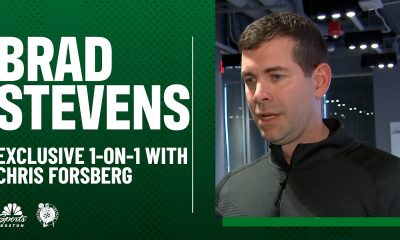NIL
The race to keep up with $40 million rosters is shaking college football
Imagn Images BLOOMINGTON, Ind. — It’s the first day of college football’s spring transfer portal window, players are jumping in left and right, and Indiana coach Curt Cignetti is anxious. Coming off an 11-2 2024 season that included a College Football Playoff berth, life is pretty good in Bloomington. The university and its supporters are committed […]
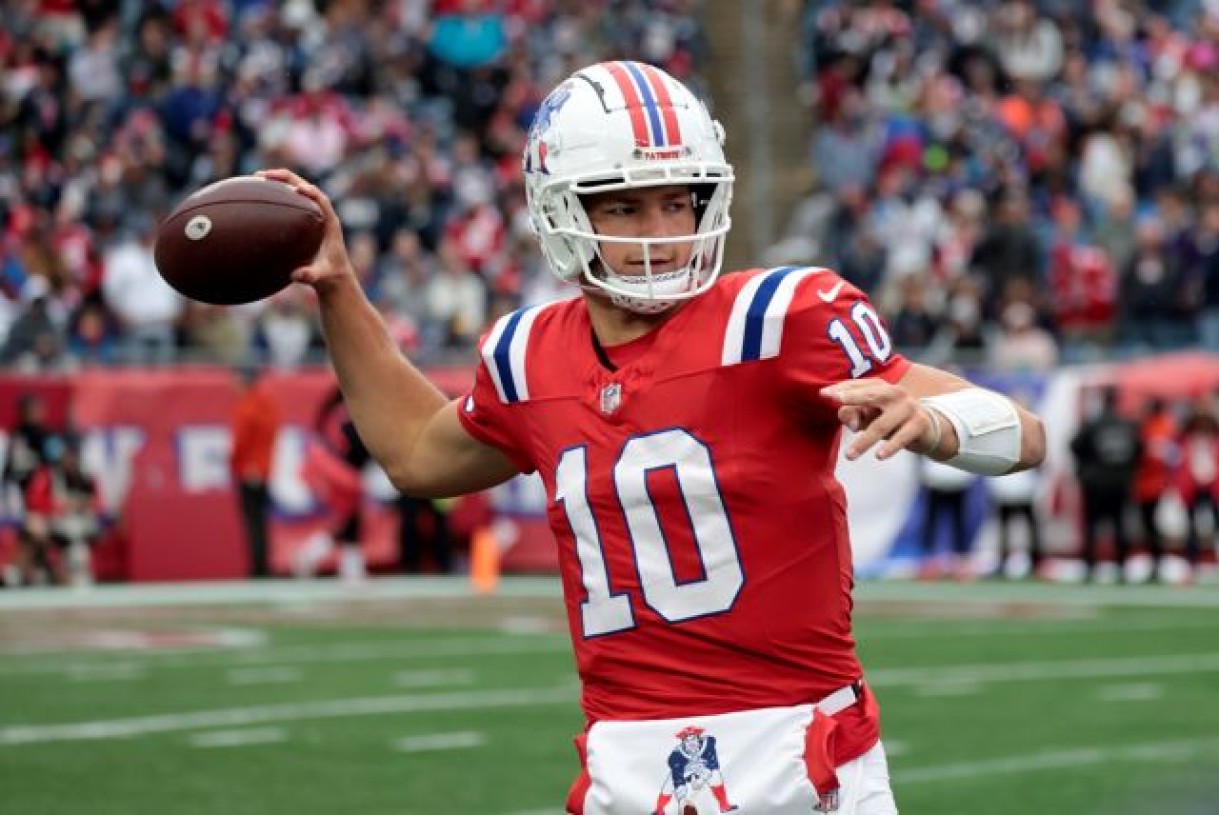
![]()

BLOOMINGTON, Ind. — It’s the first day of college football’s spring transfer portal window, players are jumping in left and right, and Indiana coach Curt Cignetti is anxious.
Coming off an 11-2 2024 season that included a College Football Playoff berth, life is pretty good in Bloomington. The university and its supporters are committed to investing in Indiana football, ensuring it can be more than just a one-hit wonder. With the fiery Cignetti’s unrelenting pursuit of success and the player and coaching talent returning, Indiana will have a real chance at making the College Football Playoff again in 2025.
But Cignetti is still uneasy — and for good reason. Tampering is rampant in college football, and around every corner, a possible enemy lurks trying to poach one of Cignetti’s players. In what was supposed to be a relatively quiet portal period, it has instead been super-charged with football programs making a last grasp at adding as much talent as possible before a likely NCAA v. House settlement that paves the way for revenue sharing.
“This is an unprecedented couple days, weeks, where everybody’s waiting on this rev share, and the five or six out there that have unlimited NIL resources, it’s kind of scary for everybody else,” Cignetti told CBS Sports. “I think our little pot of gold is pretty nice, but we’re not at $40 million. Or $30 million. Or even $25 million.”
A year ago, Ohio State made national headlines when athletic director Ross Bjork said the football program spent $20 million on its eventual national championship-winning roster, but multiple industry sources with knowledge of the market told CBS Sports the top spending programs in 2024 paid upwards of $30 million.
Is Cignetti saying the top of the market is now $40 million?
“Right now, I would say yes,” the Indiana football coach said.
Forty million dollars on a college football roster.
That is four times the new $10 million club at the top of college basketball that CBS Sports’ Matt Norlander detailed last week. One athletic director at a major college program recently told me that the most expensive college basketball roster could be $15 million-$18 million in 2025. Norlander put 10 schools in that exclusive $10 million club: Arkansas, BYU, Duke, Indiana, Kentucky, Louisville, Michigan, North Carolina, St. John’s and Texas Tech.
Cignetti’s proclaimed list of the biggest spenders isn’t as long but there is some overlap with the top basketball budgets.
“I mean if you want to be the best, you got to be able to compete against the best,” Cignetti said. “Right now I understand that is Oregon, Ohio State, Texas. … Texas Tech because of their oil money. I think Notre Dame’s up there pretty good right now, too. Miami, of course.”
Three of those schools rank in the top five of 247Sports’ team transfer portal rankings while Texas has added four Power Four defensive linemen transfers, one of the most expensive positions to grab out of the portal.
“Those people are kind of playing their own game, but you’ve got to be in that next tier,” Cignetti said. “There are enough good ones out there. You’ve got to be able to retain your good ones and then go get what you need.”
By the end of that first day of the spring window, more than 500 FBS players had jumped into the portal with many more to come in the following days. It ranged from starting SEC quarterbacks like Nico Iamaleava to second-team all-ACC receivers like Trebor Pena to star Cal running back Jadyn Ott.
The influx of likely revenue share money with NIL has sent player compensation skyrocketing. This isn’t necessarily new — CBS Sports detailed its impact on the market back in December — but that it has continued into April is, at least partially, because of a 75-year-old federal judge who resides in California.
The $10 million club: College basketball’s portal recruiting hits unthinkable levels of financial chaos
Matt Norlander
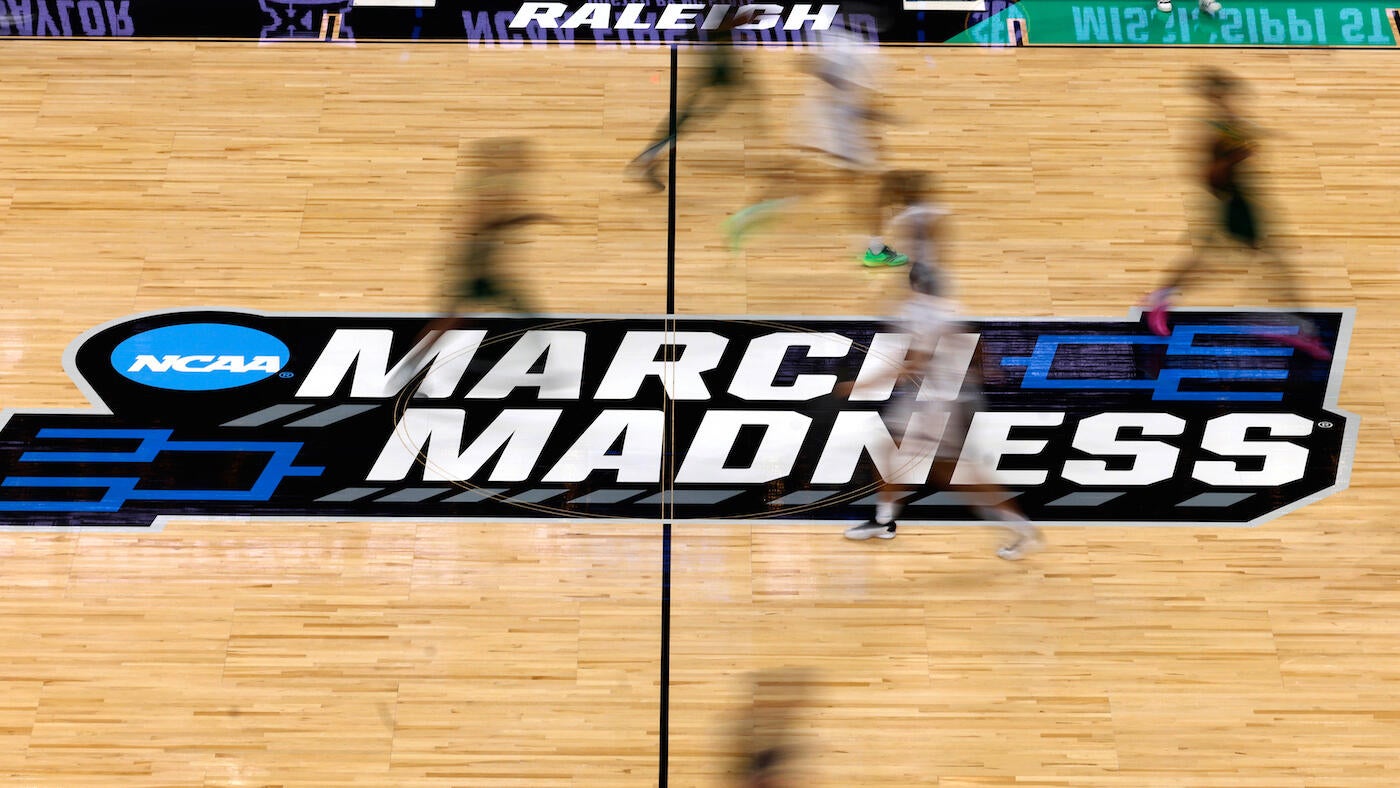
Is the House settlement finally coming?
In the swan song of a long legal career, Judge Claudia Wilken is expected to rule soon on the landmark House case. Multiple college sports executives told CBS Sports they thought it could happen at the end of last week by Good Friday, but when that came and went, the hope is now it’ll be this week.
If Wilken approves as expected, it will set in motion a $2.8 billion settlement and allow schools to begin paying their athletes directly as soon as July 1. Within those terms, schools are expected to have a $20.5 million “cap” in Year 1 to spend on all their athletes, with the specific payout up to each school’s discretion.
There are some notable things to consider out of that basic information.
One, if the top end of last year’s college football market was $30 million and the absolute max a school can spend now is $20.5 million — and no school will spend exclusively on football — something has to give. Either player compensation will have to come down, or schools will have to find a way to make up that money in other areas like NIL. Under the revenue share era, the difference is there will be third-party enforcement of NIL deals to see if they hold up to an ambiguous fair market value.
A Deloitte-administered NIL clearinghouse will weigh in on every NIL deal of $600 or more to determine whether it holds up to a fair market value assessment. There are a lot of different interpretations of what that enforcement will look like (more on that later) but the idea of regulating what has been a free-for-all for years has prompted some programs to be extra aggressive this cycle. The thinking goes that every deal signed before Wilken officially approves the House settlement won’t be subject to any review. It offers potentially the last opportunity to double-dip with unregulated NIL money and the impending revenue share money, allowing for programs to spend tens of millions on their 2025 rosters.
“People are trying to offload money now but this will be the last cycle where guys are getting big paychecks because of rev share,” says South Carolina general manager Darren Uscher.
House v. NCAA settlement: Approval awaits in landmark case as judge digs in on roster limits
Brandon Marcello

Texas Tech, which currently has 247Sports’ top-ranked transfer portal class, has been the most aggressive ahead of the revenue share era. Its top boosters saw an opportunity, decided that money was no object, and went all-in on landing a class that included recent Stanford transfer edge-rusher David Bailey, who multiple sources said will make more than $2.5 million to suit up for the Red Raiders next season.
“They are insane,” one NIL agent said, almost in awe. “They are crazy and do not care. I think they are like, we have one shot before this gets figured out to build a team, and we’ll just overpay people.”
It’s not just oil money-fueled Texas Tech, though. The agent detailed a recent negotiation with an SEC school for a top tackle. In December, he says, the market for a player of his caliber was in the $1 million to $1.5 million range. Now, it was $2 million to $2.5 million for no reason other than to spend as much money as possible before revenue sharing begins.
“Just raise the number, who cares,” is how the agent described the school’s approach. “Let’s just get him in there.”
Darren Heitner, a prominent sports law attorney, was bombarded with requests in the lead-up to Wilken’s April 7 House hearing. Schools were desperate to get deals finalized ahead of the hearing in case the settlement was approved that day. At a minimum, plenty of schools thought Wilken would rule before the spring transfer portal window opened on April 16, creating an unexpected final opportunity to deploy unregulated NIL money.
Heitner never believed Wilken would make a final ruling that day but happily obliged the requests and tried to extract as favorable terms as possible for his clients in the rushed scenario. The sports law attorney who works with athletes and collectives says there is no consensus among the industry on what it all means. Some schools fear what’s to come and think every deal must be completed before the settlement is approved. Others believe that there’s nothing to worry about as long as they are done before June 30. And the most bullish are skeptical of any enforcement component and will continue operating as they have been. It makes for a muddled market where it’s challenging to sift through what’s real.
“I would characterize it as absolute uncertainty and/or willful ignorance and trying to utilize the uncertainty as leverage when there’s a possibility of doing so,” Heitner said.
Consider Heitner in the skeptical department that the rush to get deals done is necessary.
“At the end of the day, even if Wilken just signed off on this revised settlement agreement, is there any real reason to be fearful of the system that’s going to be implemented?” Heitner said. “Do we really think that spending is going to be decreased as a result? I don’t.”
Are NIL and rev share contracts binding?
Many coaches and administrators hope revenue share agreements will calm a wild market. Currently, there are essentially two free agency periods, including one during the College Football Playoff, that allow players to potentially jump to multiple schools within an academic year.
Tight end Tanner Kaziol transferred to Houston from Wisconsin just last week after playing for Ball State last season. Quarterback Joey Aguilar entered the transfer portal Monday after UCLA recently added Nico Iamaleava. Aguilar, who played at Appalachian State last season, went through spring practice with UCLA but is now headed to Tennessee, the former home of Iamaleava.
Winners and losers from Nico Iamaleava saga: QB overplays his hand, UCLA makes a splash, Tennessee will be OK
Cameron Salerno
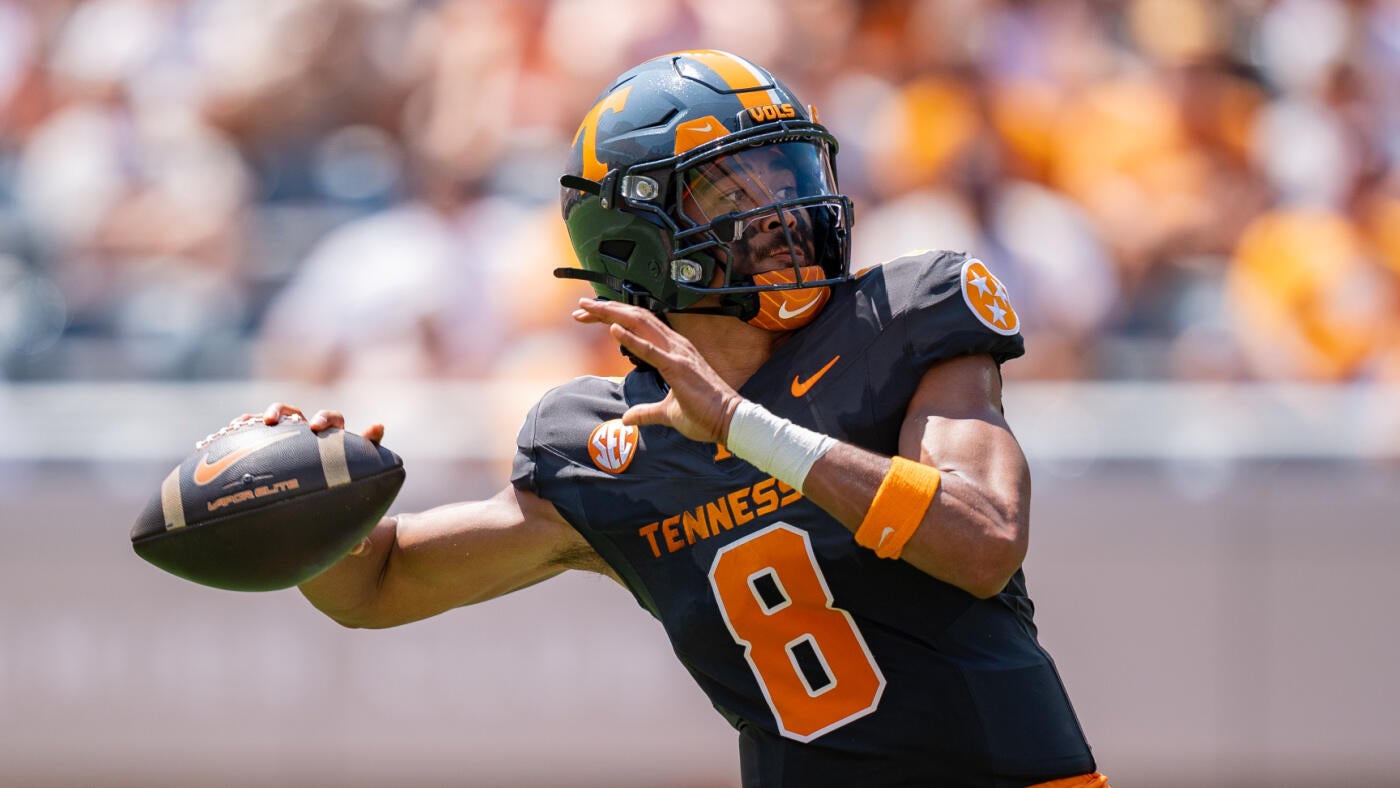
There are numerous other examples of players transferring away from schools before ever playing a game for them.
“Supposedly the thought was when they signed part of what they’re signing is a rev share deal is they are bound, to some extent, to your school,” Cignetti said. “You own their NIL rights. It hasn’t slowed down all these other guys jumping in.”
Miami defensive back Xavier Lucas is believed to be the first one to test the enforceability of the revenue share agreements when he left Wisconsin in January after signing a two-year deal that granted the school the non-exclusive rights to use his name, image and likeness. Wisconsin refused to submit his name in the transfer portal but Lucas went ahead and left the school anyway, enrolling academically at Miami. Heitner, who represented Lucas, had planned to file a lawsuit against Wisconsin for allegedly violating NCAA rules in its refusal to submit Lucas into the transfer portal before he withdrew academically from the school. Lucas, the 20th-ranked transfer player, is projected to be a starter for the Hurricanes in 2025.
The same questions Cignetti raised about rev share deals can be said for NIL agreements. In both college basketball and college football, collectives have devised agreements intended to bind a player to a school and force either the player or the new school to pay out the contract if said player chooses to leave. In a world without player unions and collective bargaining, this is the attempted workaround to bring stability to what is otherwise unregulated free agency all year.
The question is whether any of it is legally enforceable. Mit Winter, a well-known sports law attorney at Kennyhertz Perry LLC, believes they are not.
Arkansas athletics director Hunter Yurahek appears dead-set on finding out, announcing his support for NIL collective Arkansas Edge pursuing the enforcement of “their rights under any agreement violated by our student-athletes. The social media post came one day after backup quarterback Madden Iamaleava followed his brother, Nico, to UCLA
Heitner is currently representing a football player in a similar scenario. The player wants to enter the transfer portal and forfeit any remaining obligations while the collective is trying to enforce clauses within the contract which include liquidated damages. Heitner’s argument is that by leaving now and giving the school a chance to replace the player, “there’s really no harm whatsoever.” Still, like most things within college athletics these days, it’ll take a lawsuit to see what holds up or not. The same could be said for the fair market value assessment where Heitner says he’s already been asked to start preparing a lawsuit to challenge it once the House lawsuit settlement goes through.
Will the House settlement be approved, and if so, when? Can revenue share agreements provide stability to the current unrestricted free agency within college sports? Will the big collectives and NIL money still run the sport or will the new NIL clearinghouse enforcement actually have some teeth to it?
These are all questions coaches and administrators are asking themselves right now. With little clarity or direction, it is up to each individual school and coach to decide what is right and wrong strategically in this new era.
For coaches like Cignetti, coming off a terrific season, there is baited breath trying to get through this final portal window, which closes April 25, with an intact roster against a predatory market looking to pay big money for contributors.
“Right now is a different time,” the Indiana coach said. “These next couple weeks who knows how long until this thing gets passed because there’s some crazy stuff going on.”
NIL
Matt Rhule on recruiting against bigger NIL offers: ‘Bad teams have more money’
While at Nebraska, head coach Matt Rhule knows that he has plenty of resources. In the NIL era, however, there can still be times when you’re trailing. That’s especially the case when recruiting against desperate teams. Rhule explained the relatively simple logic to HuskerOnline. Teams that have been struggling on the field are more desperate […]

While at Nebraska, head coach Matt Rhule knows that he has plenty of resources. In the NIL era, however, there can still be times when you’re trailing. That’s especially the case when recruiting against desperate teams.
Rhule explained the relatively simple logic to HuskerOnline. Teams that have been struggling on the field are more desperate to win. So, they’re willing to spend more money on NIL and recruiting, especially in the Transfer Portal. Therefore, they’re setting the market.
“I think the biggest message I can put out there, and this was said to me by Troy Vincent, who works for us in the personnel department,” Rhule said. “Obviously, his dad is the number two guy in the National Football League. The thing he said to me was we always have to remember the desperate team sets the market. So, young people are looking for lots of different things, but if they’re looking just for finances, bad teams have more money because they don’t have to spend as much on everybody else.”
Oftentimes, NIL is looked at as a way for teams to add transfers and high school recruits. However, for good teams, NIL is just as much about retaining talented players who are already on their rosters and avoiding poaching from those other talented teams. However, struggling teams don’t need to worry about that because they’re typically not worried about retaining players who underperformed.
“Good teams have their money allocated to other good players with lots of options. I tell our players, if you’re a good player on this team and you’ve produced, you’re going to get hit up in the portal every single time. You should not be like, ‘What’s happening?’ You’re gonna get hit up. So, a lot of our guys got hit up,” Rhule said.
“We’ve allocated the resources as best we can. So, we didn’t see a lot of need or we didn’t have a lot of resources left to go out and say, ‘Hey, let’s get a bunch of guys,’ because I think we’ve tried to make sure we take care of the guys we have here.”
None of that is to say Matt Rhule and Nebraska have ignored the Transfer Portal. The Cornhuskers have the 40th-ranked transfer class in the 2025 cycle, according to the On3 College Football Team Transfer Portal Rankings. That’s with 17 players joining the program.
Nebraska begins its regular season on August 28th with a neutral-site game against Cincinnati. That should help to give Rhule a good idea if he spent his NIL money wisely this offseason.
NIL
Jon Rothstein With Bold Proclamation on Kansas’ Current Standing
The expectations for Kansas next season are all over the board. On3 has the Jayhawks at 13 in its Way-Too-Early Top-25. ESPN’s Jeff Borzello slots Kansas at 21st. Meanwhile, coach Bill Self’s club slides into 32nd in the country in CBS Sports’ Jon Rothstein’s top-45. While the Jayhawks turn over nearly their entire roster, other […]

The expectations for Kansas next season are all over the board. On3 has the Jayhawks at 13 in its Way-Too-Early Top-25.
ESPN’s Jeff Borzello slots Kansas at 21st. Meanwhile, coach Bill Self’s club slides into 32nd in the country in CBS Sports’ Jon Rothstein’s top-45.
While the Jayhawks turn over nearly their entire roster, other than returning big man Flory Bidunga, Self and Co. have put together quite a respectable haul this offseason, headlined by the No. 1 overall recruit in the Class of 2025: combo guard Darryn Peterson.
Joining Peterson from the high school ranks are wings Samis Calderon (four-star) and Corbin Allen (three-star). The Jayhawks also put in work in the transfer portal, coming out with a three-player haul consisting of Tre White, Jayden Dawson, and Melvin Council Jr. – all three of whom were top-125 transfer portal recruits according to 247 Sports.
Nonetheless, not everyone is sold on Kansas, including Rothstein, who went as far as to say, at this moment, “Kansas would not be a top five team in the Big 12.”
But Rothstein made it abundantly clear what the Jayhawks need to do to return to their usual, dominant form:
“Kansas is two legitimate players away from being vintage Kansas,” said Rothstein.
And who may those players be?
Well, Rothstein tossed out a few options. He mentioned top transfer target Darrion Williams – who remains in the NBA Draft for the time being – and Rothstein touched on the international prospects the Jayhawks have been linked to.
The Jayhawks certainly have work to do, but with Self and his staff’s track record, one can expect Kansas to put the finishing touches on its Class of 2025 – whether through the portal or overseas – in spectacular fashion.
NIL
Sacco Tabbed First Team All-American By Softball America
STARKVILLE – Sierra Sacco was named a First Team All-American by Softball America on Tuesday. The Bulldogs’ leadoff hitter is the 11th individual in program history to earn All-America honors from at least one outlet, and the sixth to earn First Team recognition. Mississippi State has now had at least one All-American in three […]
Mississippi State has now had at least one All-American in three of the last four seasons, and Sacco is the first outfielder selected since Iyhia McMichael in 2004.
A First Team All-SEC selection, Sacco was one of the 12 players drafted to play professionally this summer. In her final collegiate season, she posted a .450 average that ranked fourth in program history and 14th nationally. Her 1.286 OPS ranks sixth in MSU single-season history and she finished the year second all-time for runs (64) and third for doubles (19) in a season. Sacco finished her season among the top 20 nationally in doubles (10th), hits (12th), runs (16th) and batting average.
In addition to her national ranks, the First Team All-SEC selection was among the top five in the conference in average (2nd), doubles (1st), hits (3rd), runs (4th), total bases (4th) and on-base percentage (5th). She led the team in each of the categories mentioned previously along with stolen bases (16) and home runs (11).
Sacco collected 32 extra-base hits this year, which was more than the previous three years of her career combined (27). She posted 27 multi-hit games, which ranked sixth in State’s single-season records, and 13 multi-RBI games. Her 22 two-out RBIs were sixth in MSU single-season history.
Along with the impact she made at the plate, the Bulldogs’ centerfielder was perfect defensively in her MSU career. In 157 career chances at State, she made no errors while recording five outfield assists, four of which came in 2025. She is the first Bulldog outfielder with back-to-back errorless seasons while seeing at least 50 chances in both since 2014. From 2001 to her arrival in 2024, a Bulldog outfielder had been perfect with at least 50 chances only five times.
Sacco was also a First Team NFCA All-Region selection, making her eligible for that outlet’s All-America honors as well later this month. D1Softball.com will also name All-Americans before the season is closed.
For more information on the Bulldog softball program, follow on X, Facebook and Instagram by searching “HailStateSB.”
NIL
Zakai Zeigler, SEC’s 2-time defensive player of year, suing NCAA to play 5th season in 5 years
Two-time Southeastern Conference defensive player of the year Zakai Zeigler is suing the NCAA over rules limiting him to four seasons in a five-year window as an unlawful restraint of trade under both federal and Tennessee laws. Zeigler’s lawsuit was filed Tuesday in the U.S. District Court for the Eastern District of Tennessee. The point […]
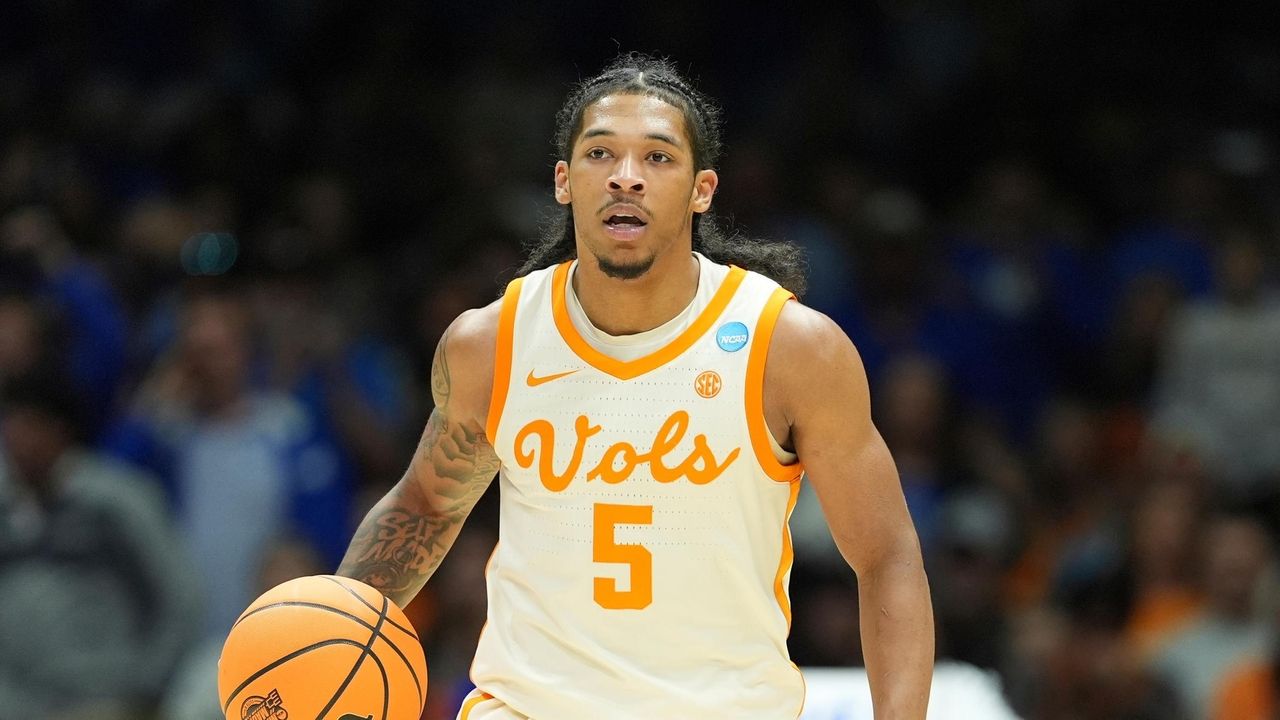
Two-time Southeastern Conference defensive player of the year Zakai Zeigler is suing the NCAA over rules limiting him to four seasons in a five-year window as an unlawful restraint of trade under both federal and Tennessee laws.
Zeigler’s lawsuit was filed Tuesday in the U.S. District Court for the Eastern District of Tennessee. The point guard played four seasons at Tennessee, helping the Volunteers to consecutive Elite Eight berths before graduating earlier this month.
The Vols went 109-36 during Zeigler’s time with the school. Zeigler was a third-team All-American this season, which ended with Tennessee’s loss to eventual national runner-up Houston in the Elite Eight on March 30.
“We have requested a preliminary injunction to allow Zakai to compete in the upcoming season while pursuing his graduate studies,” according to a statement from the Garza Law Firm and Litson PLLC. “We look forward to a swift resolution of this matter so that Zakai can begin preparing for next season.”
The NCAA said in a statement the association fully supports athletes profiting from name, image and likeness along with other benefits and is working for such reforms, which includes a proposed $2.8 billion settlement of an antitrust lawsuit.
“A patchwork of different state laws, executive orders and court opinions, make it challenging for any league to operate on a fair playing field, including at the conference level and that’s why partnering with Congress to develop a national standard would provide stability for student-athletes and schools everywhere,” the NCAA said.
This latest lawsuit against the NCAA notes Zeigler “diligently completed his undergraduate degree in four years” and graduated this month. That makes Zeigler’s lawsuit different from athletes who started careers at junior colleges or lower-division NCAA schools and are seeking a fifth season.
Yet the NCAA rule limiting athletes to four seasons during a five-year window keeps Zeigler from playing a fifth season and earning NIL money in “the most lucrative year of the eligibility window for the vast majority of athletes,” according to the lawsuit.
How much could Zeigler could earn in a fifth season with the Vols? The lawsuit says between $2 million and $4 million for 2025-26, given his record and visibility playing in the Southeastern Conference and based on projections from the Spyre Sports Group, the NIL collective associated with the university.
Athletes who redshirt or take five years to finish an undergraduate degree can earn NIL money each of their five years. The lawsuit also points to the NCAA’s redshirt system controlling who gets access to a fifth year of eligibility.
The lawsuit asks that the NCAA rule be declared a violation of Section 1 of the Sherman Act and Tennessee’s Trade Practices Act.
NIL
‘Bizarre System’ – Paul Finebaum Warns NIL Could Eventually Break College Football, Backs Kirby Smart’s Concerns
As Name, Image, and Likeness (NIL) deals and the transfer portal reshape the College Football landscape, analyst Paul Finebaum sounds the alarm, warning of the potential decline of a sport that is very close to America’s heart. In a recent interview on McElroy and Cubelic in the Morning, Finebaum called the current state of college […]
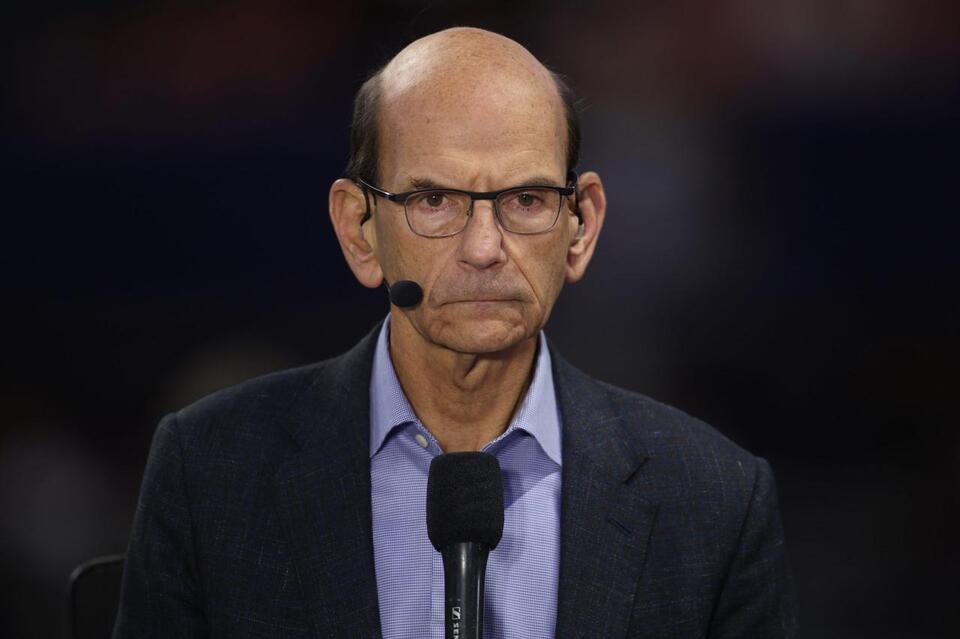

As Name, Image, and Likeness (NIL) deals and the transfer portal reshape the College Football landscape, analyst Paul Finebaum sounds the alarm, warning of the potential decline of a sport that is very close to America’s heart.
In a recent interview on McElroy and Cubelic in the Morning, Finebaum called the current state of college football an “existential threat,” referring to concerns raised by Georgia Bulldogs head coach Kirby Smart.

The ‘Bizarre System’ of College Football Can Break the Sport Says Paul Finebaum
Finebaum didn’t mince words when asked about the health of college football.
“I think college football is at a tipping point,” he said, pointing to the massive shifts in the sport’s landscape brought by NIL and the transfer portal.
While the 2024 season delivered some of the most thrilling moments in the sport’s history, like Alabama’s upset over Georgia and Michigan’s gritty Big Ten title run, it also highlighted off-field issues that are creating a slow-burning disconnect.
Finebaum noted that older fans, the backbone of college football’s loyal base, are growing frustrated. The lack of player loyalty, fueled by a transfer portal that allows athletes to leave “at a moment’s notice,” is eroding the emotional ties that bind fans to their teams.
Finebaum’s claims aren’t bogus; the numbers from the previous season show how on the money the analyst’s claims are. For example, in 2024, over 3,000 players entered the transfer portal, a 20% increase from 2022. This churn, combined with NIL deals that can see freshmen earning six-figure sums, has created what Finebaum calls a “bizarre system.”
Kirby Smart, speaking at a Regions Bank event in October 2024, highlighted the absurdity, saying, “It’s not right for a freshman to be paid more than an upperclassman.” Finebaum agrees with the statement, arguing that the issue isn’t players earning money but the lack of commitment to schools that makes the fans cheer for a team.
The Fan Disconnect
College football thrives on tradition. Rivals like Ohio State-Michigan or the Iron Bowl carry the emotions of generations of fans. But according to Finebaum, when players can switch teams with ease, that connection drops.
He acknowledges that the sport’s on-field product remains compelling for sponsors, as the viewership for the 2024 College Football Playoff hit 22.6 million for the championship game. Still, the disconnect can potentially “break” the sport off-field.
KEEP READING: Paul Finebaum Rips New CFP Format
Television executives and administrators may shrug off these concerns, but Finebaum believes the trickle-down effect is inevitable.
In the end, College football isn’t doomed, but it’s at a crossroads. Finebaum’s hope lies in the games themselves, which still captivate millions each Saturday. Yet, as Kirby Smart’s concerns highlight, the sport must address its “bizarre system” to preserve its soul. Without reforms, the disconnect could grow.
College Sports Network has you covered with the latest news, analysis, insights, and trending stories in college football, men’s college basketball, women’s college basketball, and college baseball!
NIL
David Pollack calls for an end to conference championship games
College Football Playoff expansion could drastically alter the landscape for conference championship games. In fact, some high-profile analysts are already calling for the end of league title games. Former ESPN analyst David Pollack brought up the topic recently on the See Ball Get Ball podcast. He put things in no uncertain terms. “I think the […]

College Football Playoff expansion could drastically alter the landscape for conference championship games. In fact, some high-profile analysts are already calling for the end of league title games.
Former ESPN analyst David Pollack brought up the topic recently on the See Ball Get Ball podcast. He put things in no uncertain terms.
“I think the conference championship games will be an interesting discussion point with that,” Pollack said, referring to playoff expansion. “Again, if you’re going to add on more and more games to the body, yeah, I do think (championship games should go away). But that’s also going to be money. That’s also going to be data points. But yes, that needs to go away.”
There’s going to be quite the tug of war between the powers at be in college football over conference championship games. On the one hand, they can be immense wealth drivers. Games like the SEC and Big Ten championship are huge events.
On the other hand, the games themselves are losing importance with the expanded playoff field. At what point do they become redundant or even a detriment to a team’s playoff aspirations?
Then there’s another factor for Pollack. And he’d know a thing or two about it.
“We need to talk about safety of kids at some point,” Pollack said. “Well when you keep putting on more and more games and they’re finishing with 20 games in a regular season, that’s a lot to ask, man. That’s a lot.”
So could conference championship games disappear altogether? Pollack’s take isn’t shared by everyone.
ESPN’s Pete Thamel believes there’s a world where both conference championship games and an expanded playoff can exist. How remains to be seen.
“I think that’s a conversation that’s going to continue to evolve right now,” Thamel said. “I just, my opinion is I don’t honestly think we’ll get there. I think it will go, there will be a conference championship game with guarantees and then there will be play-in games, if you will, on the others.
“And for the ACC and the Big 12, Jim Phillips in the ACC has been pretty open about creating extra inventory. And, look, in an era where everyone’s trying to squeeze out the last dollar, it would make sense to have two play-in games over one conference championship game. Just bottom line financials.”
-

 Fashion2 weeks ago
Fashion2 weeks agoHow to watch Avalanche vs. Stars Game 7 FREE stream today
-

 High School Sports2 weeks ago
High School Sports2 weeks agoWeb exclusive
-

 Sports2 weeks ago
Sports2 weeks agoPrinceton University
-

 Sports2 weeks ago
Sports2 weeks ago2025 NCAA softball bracket: Women’s College World Series scores, schedule
-

 Motorsports2 weeks ago
Motorsports2 weeks agoBowman Gray is the site of NASCAR’S “Advance Auto Parts Night at the Races” this Saturday
-

 NIL2 weeks ago
NIL2 weeks ago2025 Big Ten Softball Tournament Bracket: Updated matchups, scores, schedule
-

 NIL2 weeks ago
NIL2 weeks agoPatty Gasso confirms Sophia Bordi will not finish season with Oklahoma softball
-

 Motorsports2 weeks ago
Motorsports2 weeks agoMOTORSPORTS: Three local track set to open this week | Sports
-

 Motorsports2 weeks ago
Motorsports2 weeks ago$1.5 Billion Legal Powerhouse Announces Multi-Year NASCAR Deal With Kyle Busch
-
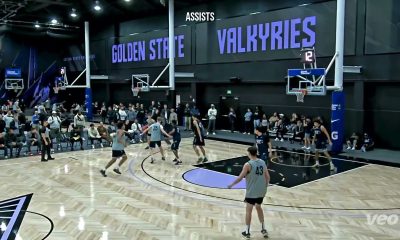
 High School Sports3 weeks ago
High School Sports3 weeks agoMaryland Basketball Recruiting




























